A Home Cooked Idea
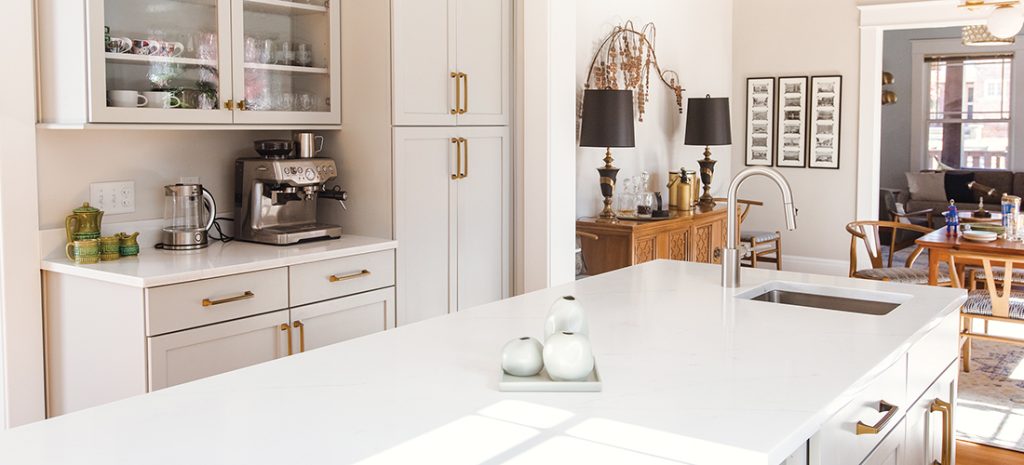
At Home with MACHETE’s Tal Blevins
By Cynthia Adams • Photgraphs by Amy Freeman
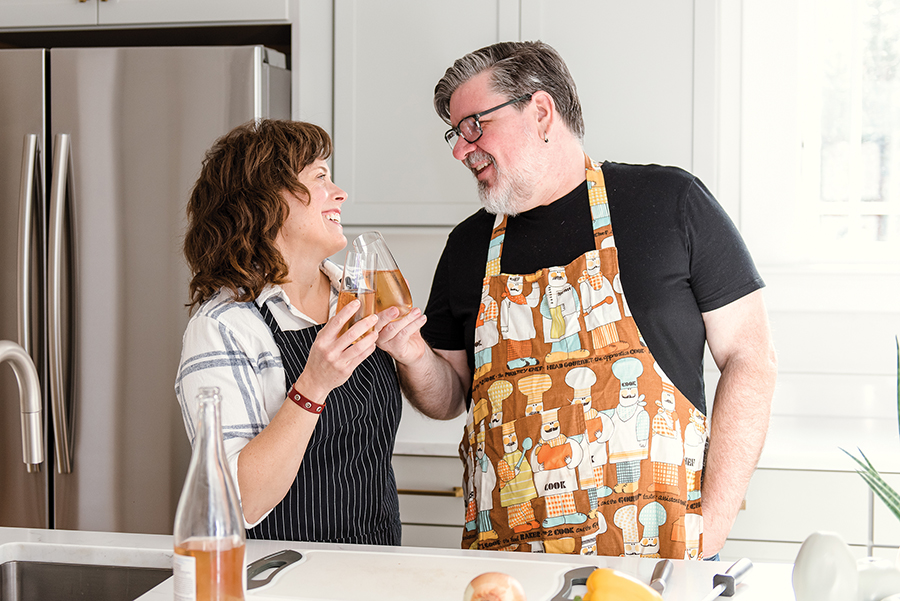
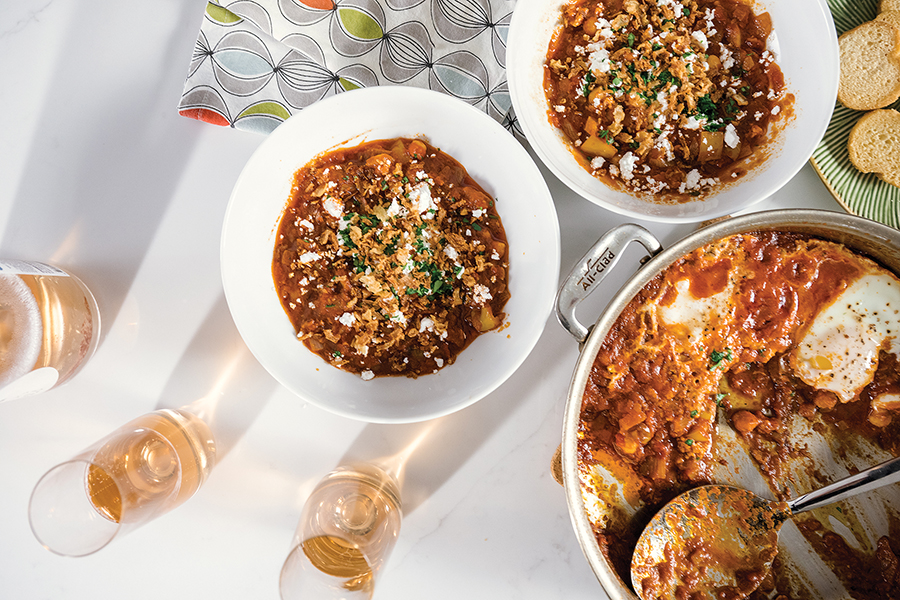
Tal Blevins was upfitting a sleekly professional kitchen at MACHETE, a restaurant he launched in 2019 in lower Fisher Park — soon after a redo of his home kitchen, which needed subtle and sympathetic changes.
After Blevins and his wife, Nicole Lungerhausen, moved from California to Greensboro in 2017, they found a lovely Arts and Crafts style home in Westerwood.
Loving nothing more than whipping up one communal supper after another for close friends, their swiftly renovated kitchen served as an incubator and test kitchen for pop-up suppers. The number of guests jumped from 12 to 20 to 40 diners.
Soon guests began to urge Blevins, who was born a Tar Heel, to start his own restaurant. And so, MACHETE, Greensboro’s hottest new boîte (French for a small restaurant, which sounds quirky enough for a “boundary-pushing” eatery) was born, opening to rave Yelp reviews and a James Beard nomination.
“I’d always wanted to own one,” Blevins says about restaurants. But as a young man, that wasn’t remotely the plan.
During his teen years, Blevins, a graduate of Page and UNCG, was interested in tech, sparked while working at Babbage’s, a mall computer store, where he built and repaired personal computers as a side gig. (To older customers, tech savvy kids were a marvel. “We were wizards,” Blevins says chuckling.)
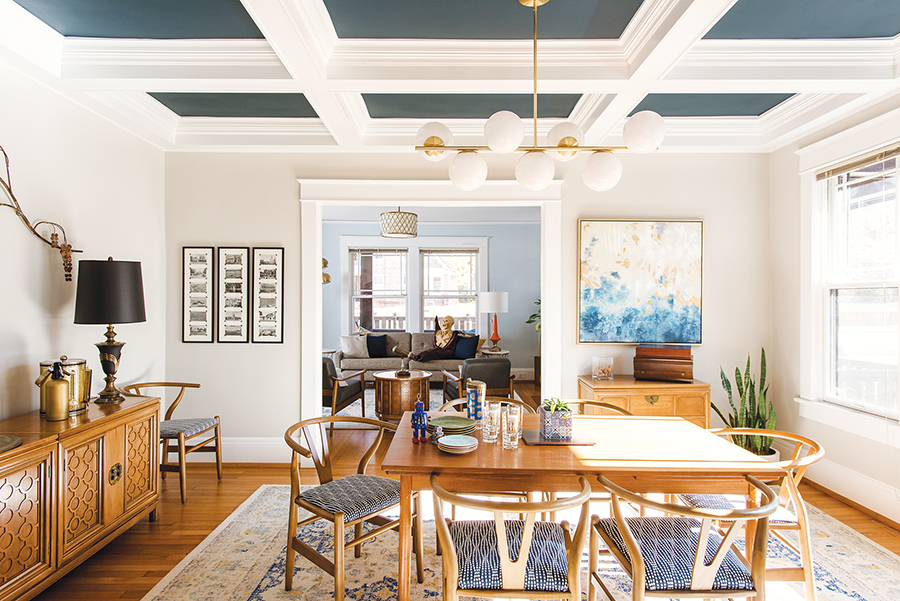
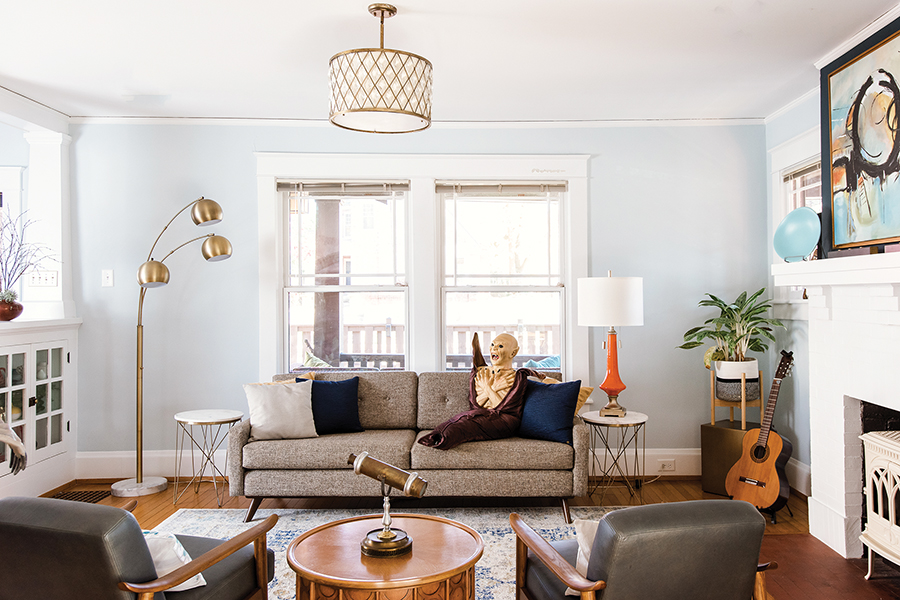
And he loved gaming. Writing about gaming was Blevins’ goal, although he flirted with other interests, including geography, urban planning and music. (He plays guitar and drums as a hobby.)
Initially, he explored all of those interests. His mentor, UNCG professor Keith Debbage, attended graduate school at the University of Georgia. Blevins followed suit, studying urban planning while playing in a band. After all, Athens gave rise to rock groups such as R.E.M., Widespread Panic, the B-52s and Squirrel Nut Zippers.
Meanwhile, a contact from Babbage’s had founded a successful video gaming website.
“GP Publications was headquartered in Greensboro in the ’90s, and then moved out to Burlingame, California,” says Blevins, who had been building quite a successful career as a freelance writer for tech and video game publications.
The company was acquired and “rebranded as Imagine Media and then Future,” and moved just south of San Francisco, he explains.
Blevins “eventually moved out to San Francisco to work at Imagine Media for their Imagine Games Network [IGN.com] in the mid-90s at their offices in Brisbane [California.]”
Brisbane placed him “just a few miles closer to San Francisco just outside the city limits. I was the editor-in-chief of the PC games site, then I headed up the content team for many years as the VP of content at IGN Entertainment.”
San Francisco wasn’t only where he found success. He also met Nicole there while she was temping at his office, working at the front desk.
“Nicole is also a writer,” Blevins adds, and also a gamer like him, explaining how their mutual interests dovetailed. Lungerhausen earned dual degrees in creative writing and theater from San Francisco University. For more than 10 years, she worked as a professional actor in the Bay area. She has published fantasy and science fiction, according to her website, and coaches fellow writers.
Six years ago, the pair decided it was finally time to settle down in Greensboro. Blevins says he also missed his mom and “chief influencer,” Audrey Gant.
The couple liked almost everything about their Arts and Crafts beauty, a standout on the street, and unusual in that it had a quarter acre lot, new garage and a spacious new addition at the rear. The home had the luxury of space, something hard to come by in San Francisco. The original section of the house was over a century old. The sellers, Kelley and Saralyn (who deceased in 2017) Griffith, were only the home’s second owners — Blevins and Lungerhausen became the third.
“He [Kelley] was an English professor and woodworker,” says Blevins. “He added on the great room. We have cabinets he built here, a table, too, in the great room.” (The great room conversion became key to their pop-up suppers to come.)
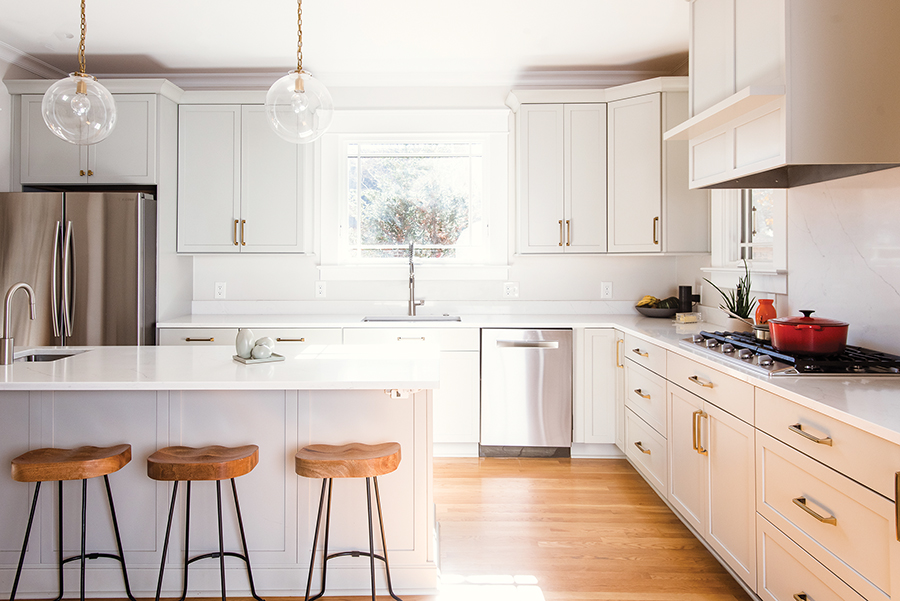
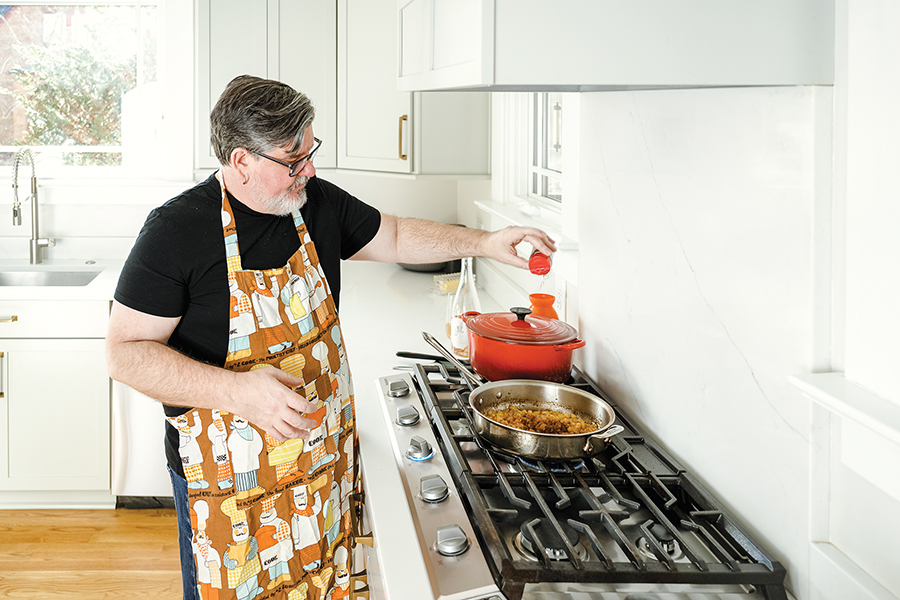
Blevins purchased the home in 2017 and soon began improvements. A call went out to a Greensboro contracting firm, Frye Build + Design.
“We got to work . . . Pam Frye tore the place apart,” says Blevins. “We didn’t have to do a lot . . . paint and stuff in the rest of the house.”
However, the contractor gutted the kitchen to the studs. The house was beautifully maintained and modernized for a century-old property — it dates to 1920. But there were tweaks in mind, modern conveniences dictated by a love of cooking and entertaining.
The Griffiths had extended the rear of the house in 2010, also creating an oversized custom screened porch behind the kitchen, and a studio space that was later converted to a great room. Both were easily accessed from the kitchen.
“They did a great job,” Blevins says, praising the Griffiths’ renovation, pointing out the parameters of the original house and how seamlessly the new trim and detailing work matches the old. The Blevines respected the original character preserved by the Griffiths.
For the sake of functionality, a few original details had to be edited in the more recent history of the house. A former breakfast nook’s removal opened up the kitchen more during the previous renovation.
Blevins and Lungerhausen took another step, further opening a doorway between the kitchen and dining room. They added a coffered ceiling, which enhanced the original design.
“We liked that for [the sake of] Arts and Crafts,” Blevins says.
“It was not a wreck by any means, but we had a different…” his voice trails off.
A different wish? A different vision, perhaps?
“Yes,” Blevins answers. At the time, he insists they “weren’t even thinking about the future supper club,” which he calls “the pop-ups.”
He adds, “My wife and I are really good home cooks — love home cooking — so the kitchen is always the heart of any house. Where people hang out. Where people talk. Where people have glasses of wine while they’re cooking too. But honestly, we wanted this open concept, too.”
In the very beginning, he says, “We came into it wanting to build a good cook’s kitchen.” Blevins and Lungerhausen reconfigured the kitchen island, allowing for practical changes. “We knew we wanted to turn it (the island),” he explains, “and utilize that window over the sink. It allowed us to have a secondary sink for prep.”
Aided by Frye, they made subtle but significant upgrades.
“We redid all the cabinetry,” Blevins adds, even though the sellers had redone the kitchen. “It was not to our liking,” he says, pausing, and adds by way of illustration, “laminate countertops.”
They developed a punch list and sketched ideas, considering work space. The process, he says, was “very visual. [We] drew up several plans.”
A pantry and coffee bar already existed. The couple added the perk of a Breville coffee/espresso maker.
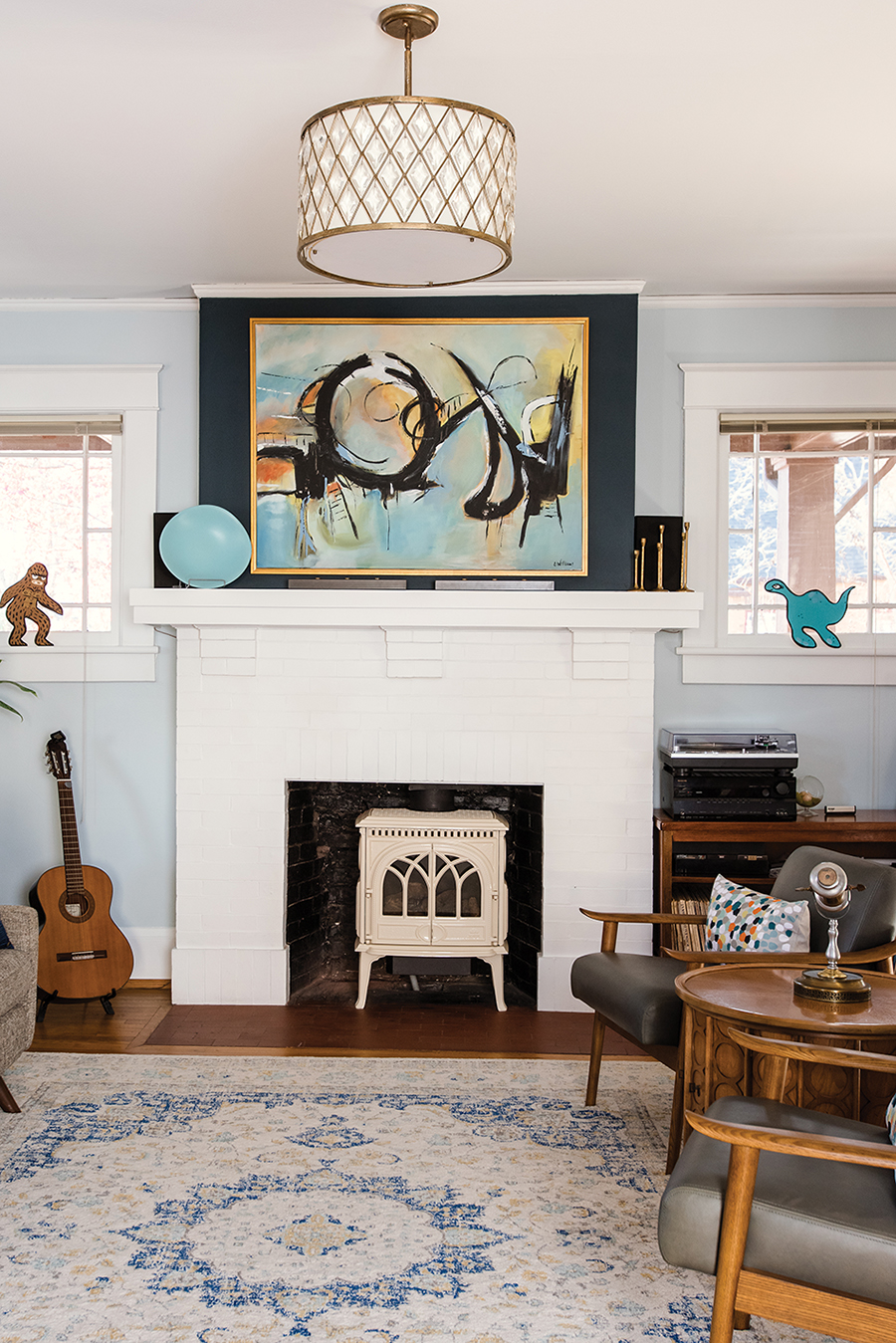 .
. 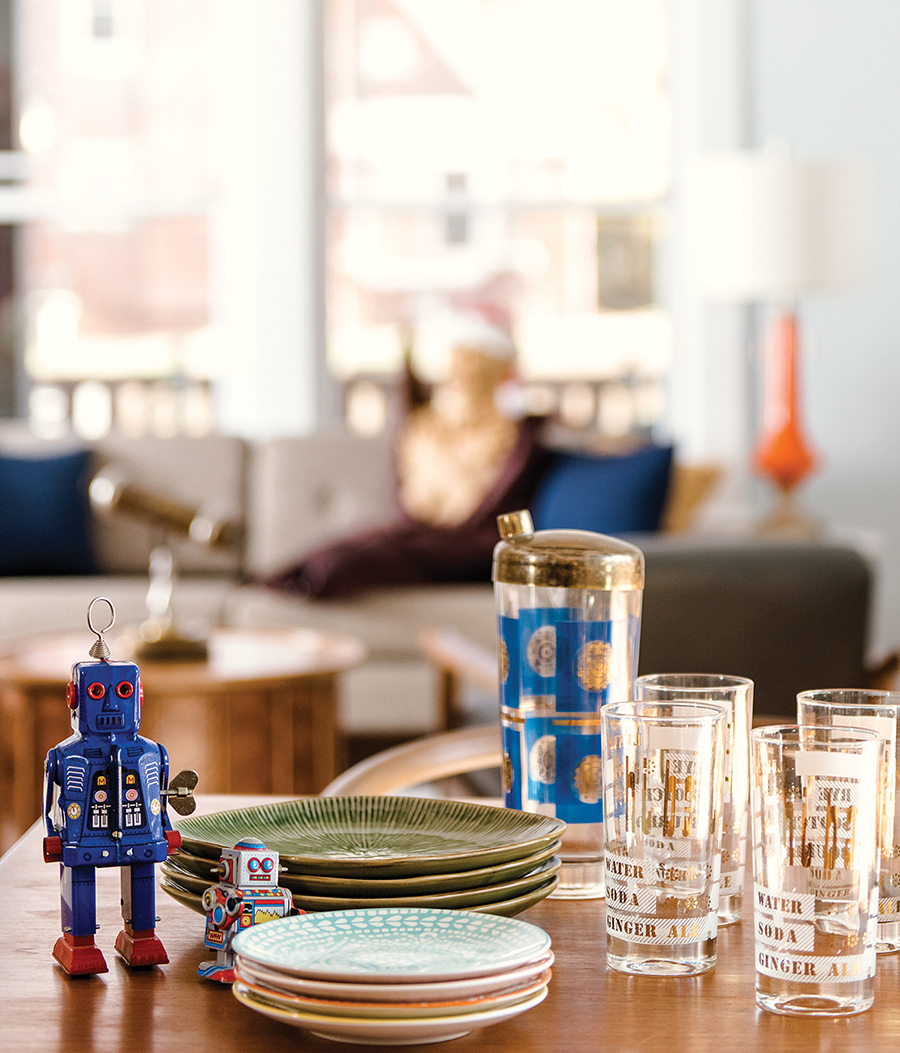
Blevins points out the secondary sink on the island and how they moved the main sink beneath a sunny window. Simple changes really worked, he says. “We knew we wanted double ovens,” he says. “And we have a pizza oven outside.”
They added things they’d always wanted in a kitchen: “You know, stuff like pull-out drawers in cabinets. I always wanted a spice drawer. A space for baking sheets and cutting boards. Lazy Susans were installed. We wanted a space, like, for our cutting boards. Having cookbooks easily accessible.”
Although the “before” real estate images of the kitchen were attractive — the couple hewed closely to the original in the resulting “after” — the focus was creating a more efficient configuration of space.
Which turned out to be a prescient decision. While the kitchen had not yet figured into their lives in the significant way soon to unfold, the new renovation had made it more functional.
By chance, they met two talented young chefs, Lydia Greene and Kevin Cottrell, while eating at the former restaurant LaRue. Blevins loved their food and suggested experimenting with a pop-up concept here in Greensboro.
The very first pop-up supper gave “confirmation of what our gut feeling was,” explains Blevins. Supper clubs were the new underground culinary movement. And Blevins loved food and dining as much as he loved gaming.
“It began as friends and family,” he says about how his experimentation with a “pop-up” restaurant began.
That first pop up was limited to a few. “It was just 12 people at this one table, and then we expanded to both rooms,” says Blevins, nodding to the front of the house. “And then, we said, OK, we have more people. Word of mouth is spreading. Friends of friends, and we had more friends of friends of friends who wanted to get in . . . ”
The original 12 guests were seated in the kitchen and dining room.
Blevins, his wife, his mother and the chefs began doing monthly communal dinners in earnest. “Two nights with 20 people back-to-back every month. Twenty seatings. Everything was Wednesdays and Thursdays.”
Swiftly, it grew to 40 bookings. “And 1–200 people requesting those seats. And when we did a pop-up, it was so unique.”
Though Blevins had always dreamed of opening and owning his own restaurant, he admits, “I would never, ever have done it, without the talent. [Now] Kevin [Cottrell] is the MACHETE head chef, and Lydia [Greene] is the chef de partie.”
Greene and Cottrell were key players in the restaurant named by Cottrell for something he has been fascinated by since he was a child: a MACHETE.
In only the space of two years, MACHETE gained a following. Success came swiftly.
And as strange as it seems for a former game reviewer and tech writer to become a restauranteur, the seed was planted when Blevins became an investor in two San Francisco restaurants that also began as pop-up kitchens.
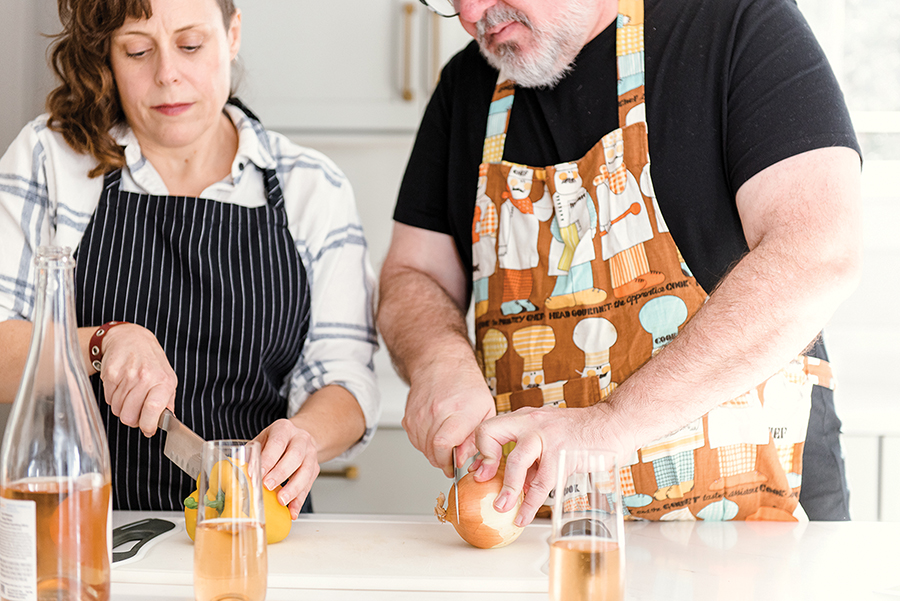
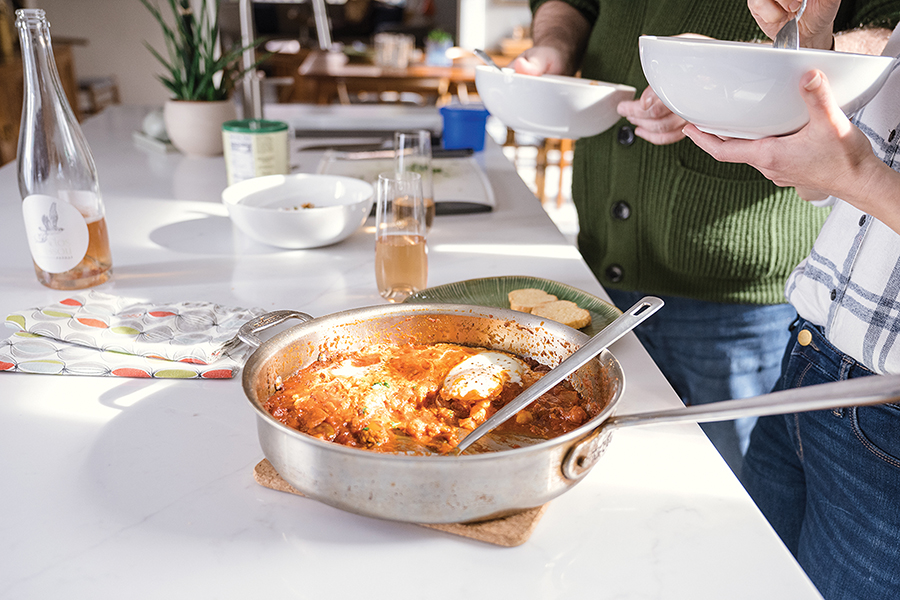
One such supper club/pop-up was the genesis of San Francisco eatery, Lazy Bear, which Blevins invested in. (Lazy Bear later became a brick-and-mortar site in the Mission district.) Such innovations had led to a California law change in 2014, legalizing “ghost” kitchens — also known as “cloud,” “dark,” “undercover,” or “commissary” kitchens, California parlance for restaurants that were carry-out only.
In the absence of dining rooms and waiters, these kitchens proliferated during the pandemic lockdowns.
As mid-2020 trends changed norms, so had the carry-out model. “Forget ghost kitchens,” Joe Guszkowski wrote in July, 2021, in Restaurant Business. “Some chefs are skirting the industry entirely to serve food out of their houses.”
Back in Greensboro, Blevins and Lungerhausen’s popular supper club, an open secret in a historic neighborhood of artists, professors and students, called to mind the speakeasies of the Roaring Twenties.
Their chef-prepared, multi-course, eclectic dinners were largely promoted only by word-of-mouth (with a little social media boost, Blevins says).
But unlike a speakeasy, guests brought their own bottles, and the food was the reason for eager comers.
“We could serve 20 people in there when we had the pop-up,” Blevins muses, indicating the commodious open space comprising their kitchen, dining and living rooms. Over time, the burgeoning crowd of diners expanded to the great room addition.
“The [first] pop-up happened all in this kitchen,” Blevins says. “People would come over, and we would let them roam all around the house.” Pause. Then, “Mom was the host. Audrey Gant.” He pauses again.
“She would always get the biggest applause of the night, when we would bring everybody out, because everybody loved Audrey. And she’s right over here. She passed in 2019, and I have her ashes in one of her old purses.”
Blevins unceremoniously plops the purse onto the kitchen stool beside him.
“So, this is where she would sit, and we would make gin and tonics and drinks for her,” he says, pausing once more. “And so . . . she’s still with us. And she passed, unfortunately, three months before we opened MACHETE.” But during their pop-up dinners, Audrey shared any number of pointers and ideas. “So, she lives on in that space,” he says, referring to MACHETE.
Is there a more important room to him than the kitchen? “There’s no room we would rather spend more time in,” he answers, Audrey by his side.
“The most beautiful story is the mural on the wall [at MACHETE] . . . for the longest time, the artist was doing cactus and succulents.”
Blevins got into a bit of a battle with the muralist. He wanted something art nouveau — vines, flowers, something a little softer. The first time his aunt came to the restaurant, she asked if they did the mural because of his mom. He asked what she meant. She explained that his mother’s favorite flower was nasturtiums, which figured into the mural.
“I almost felt like mom was on my shoulder. A piece of serendipity that means so much.”
“That big bird of paradise that’s in the lounge [at MACHETE]? That’s Mom’s, from her house. Mom loved a good, boozy martini and basil. That’s why we have a martini with a basil tincture called Audrey’s Little Helper.”
The MACHETE staff informally calls the lounge Audrey’s Lounge.
Audrey is not the only local legend frequenting MACHETE. “The 12 originals who came to this pop-up still populate MACHETE,” Blevins says. “Kris Fuller [owner of Crafted], Wes Wheeler [co-owner of Undercurrent]; Nikki Miller-Ka [a Winston-Salem food writer] . . . all people we knew. Interested in food.”
While Blevins and Lungerhausen eat at MACHETE a couple times a week, they also cook at home. Now the remodeled kitchen is no longer pressed into service as a test kitchen; it is a serene, monotone, pale gray and white space. And the adjoining addition located handily off of it, the great room and an apartment, now serves as an occasional Airbnb.
The couple supports local restaurants, such as Midtown 1618 or Blue Denim; they enjoy takeout at Bandito Bodega or milkshakes at Cook Out.
A guilty pleasure Blevins openly admits to is a nostalgic meal at K & W cafeteria.
What does he order? “Chicken pan pie if they have it. I love the country style steak. Mashed potatoes. Fried okra.”
What might he order as his last supper on Earth?
“It would probably be what my favorite meal was when I was 5 years old. As my mom would tell it: When I was 5 years old, my favorite meal was calves’ liver, squash and spinach. My Memaw would do this great squash with onion that she would cook forever. I would go to our diner in Ramseur and order that . . . They would say, does he really want that? My Mom would say, ‘Shut up; he doesn’t know there is a food he isn’t supposed to like.’”
Blevins pauses. “I always enjoyed strong . . . not the right word . . . flavors . . . Nicole?” he muses. “She would probably have tomato soup and a cheese sandwich.”
The next chapter for the culinary couple is soon-to-open Yokai, an Asian-influenced, smaller eatery near MACHETE in downtown Greensboro. Naturally, they’ve already tested it with a pop-up. Game on! OH
